6.90 miles 3h 54m ascent 305m (1000 feet)
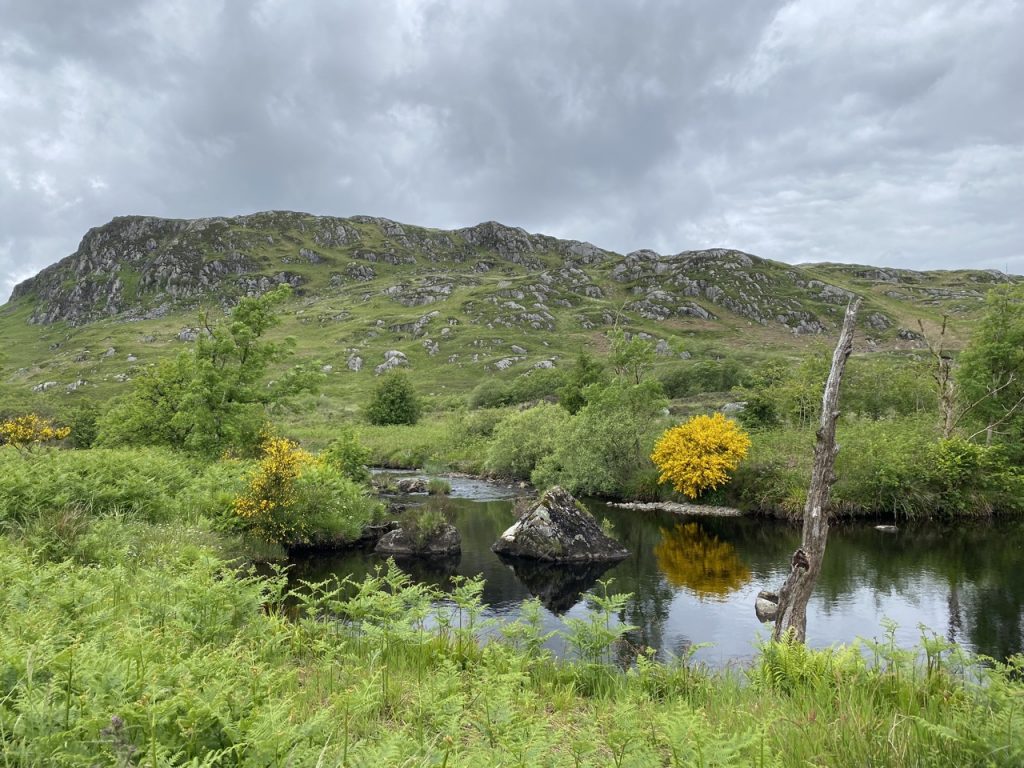
Brockloch Bridge-High Craigeazle-Dunkitterick Cottage
“I was born on Sunday, the 22d of October 1775, (I ascertained these points in 1805,— I did not exactly know my age in 1794) and baptized a fortnight after, on Tuesday 7th November — stated in the register of baptisms to be the 27th, but the old style is understood, (in the register.) The place where my father then lived is called Dunkitterick, or commonly Kitterick; in Earse, Dun-cheatharaiach, — the know of the cattle. It is on the burn of Palneur, on the south side, about a quarter of a mile from the burn, and on a rivulet that flows from the high hills above on the south. The hills of Craigneildar, Milfore, and others, quite overshadow the spot, and hide it from the sun for three of the winter and spring months. The cottage has been in ruins for more than twenty years, as the farm is herded from the house of Tenotrie, the tenant of which holds both Tenotrie and Kitterick. This place, now laid open by a road, was, when my father lived there, in a completely wild glen, which was traversed by no strangers but smugglers.”
Alexander Murray, Manse of Urr, July 20, 1812.
Yet another Galloway Forest Walk. From the car park at the easily overlooked Brockloch Bridge, along to the Red Deer Range, up the forestry track to High Craigeazle, from where you can see the three Cairnsmores. Then the track and wee footpath to the ruins of Dunkitterick Cottage. An easy enough stroll but with 1000 feet of ascent.
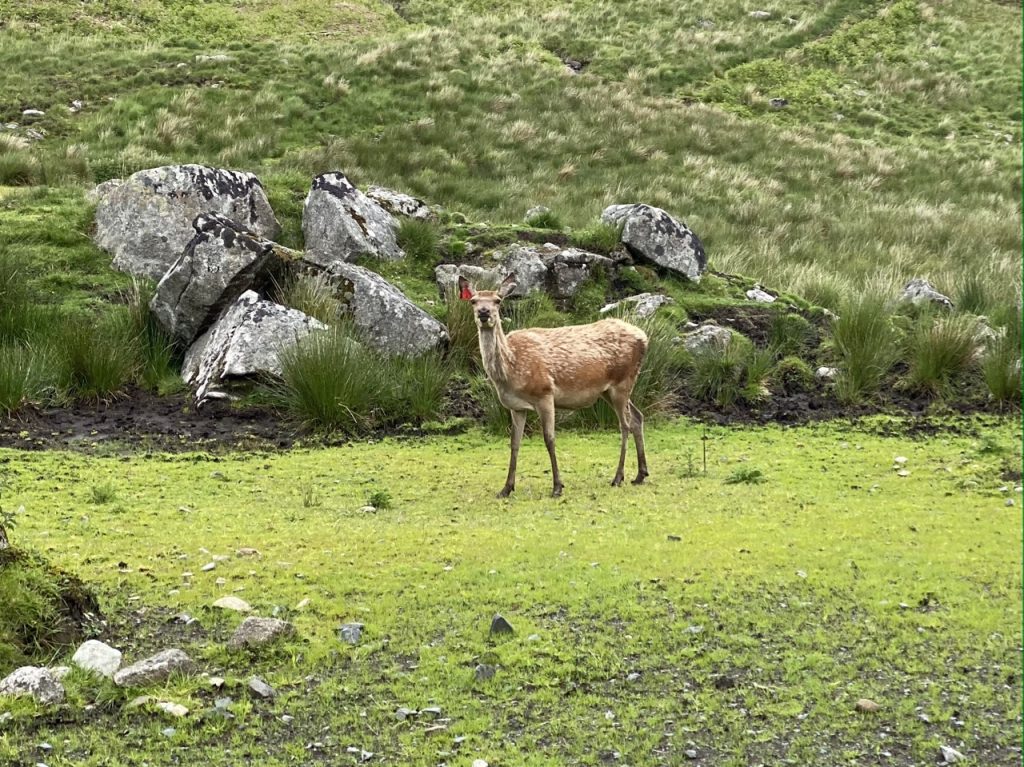
I hadn’t realised there was a footpath from Brockloch Bridge. Having spotted it we felt obliged to explore. It goes up to the Galloway Red Deer range (which actually has its own car park). There is a hide and a wooden fence with spy-holes at various heights (presumably to accommodate adults and children). The deer seemed unaware that we were so close. And the dogs seemed unaware of the deer – I’ll have to send them on a hound refresher course.
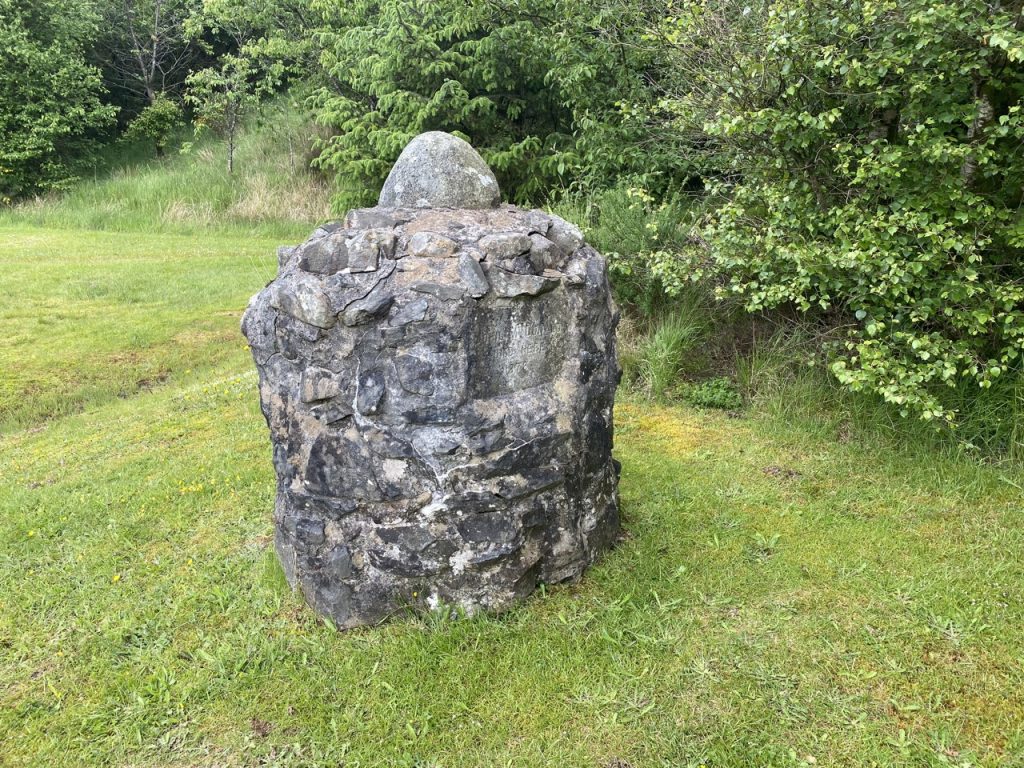
A cairn by the car-park has a plaque reading “John McDonald died here 1878”. I could not find much about the chap other than a post on the GlebeBlog explaining he was a ganging-body who had died by the old Brockloch Bridge. When the bridge was replaced in the 1970s the present memorial was built to house the plaque that had been on the original bridge. The blog explains that a ganging-body was an itinerant worker, though the Scots Dialect Dictionary gives the meaning as a beggar, tramp, or vagrant.

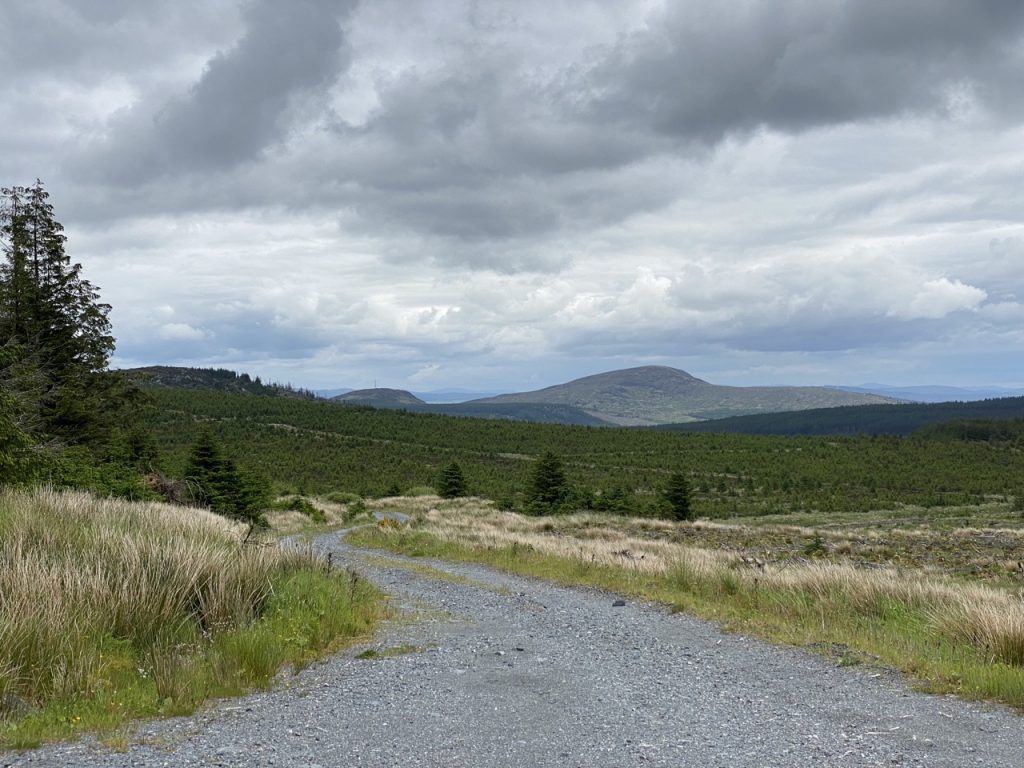
The walk up the forestry track was a gentle climb, the ascent giving us gradually increasing panoramas. Cairnsmore of Carsphairn and the much closer Cairnsmore of Dee were visible and the track ended beneath the ridge of Craigronald (one of the arms of Cairnsmore of Fleet). High Craigeazle is a shoulder of Millfore Hill and just a tad higher than Low Craigeazle a kilometre to the east. (A tad here being 10m). Craigeazle is creag iseal, low crag. Perhaps it looked that way before it was afforested. There are certainly chunks of rock peeping from the ground where it has cleared to build the forestry tracks.
We had a good variety of wildflowers by the track, including a stand of milkwort growing taller (10cm) than I have seen before.
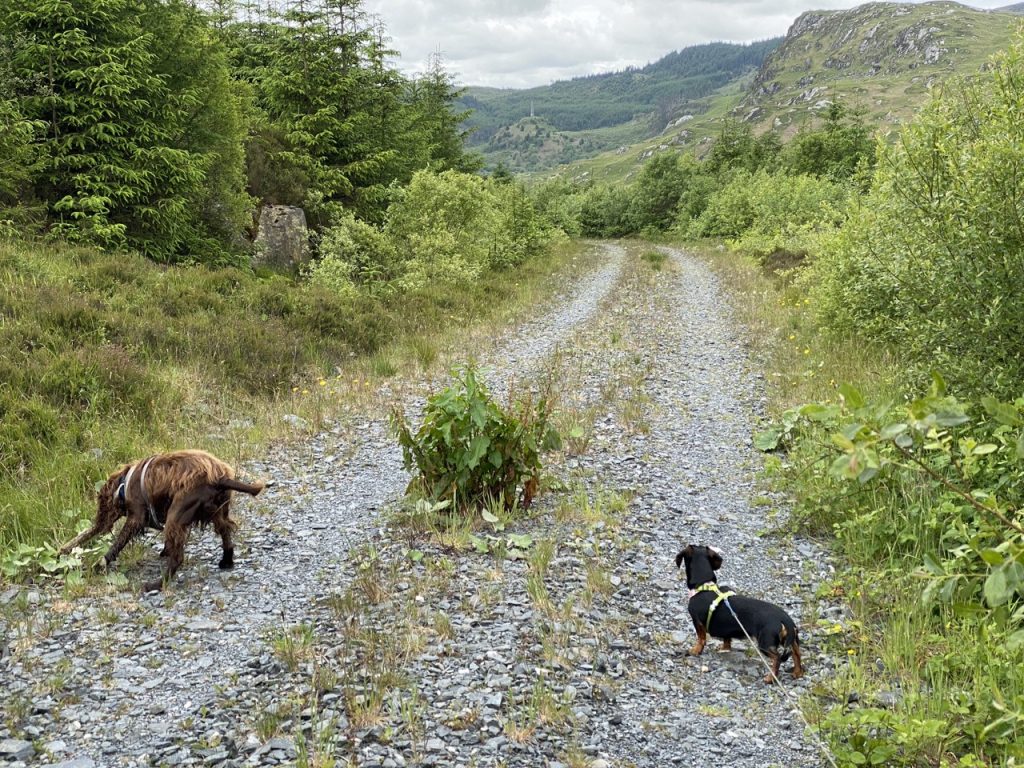
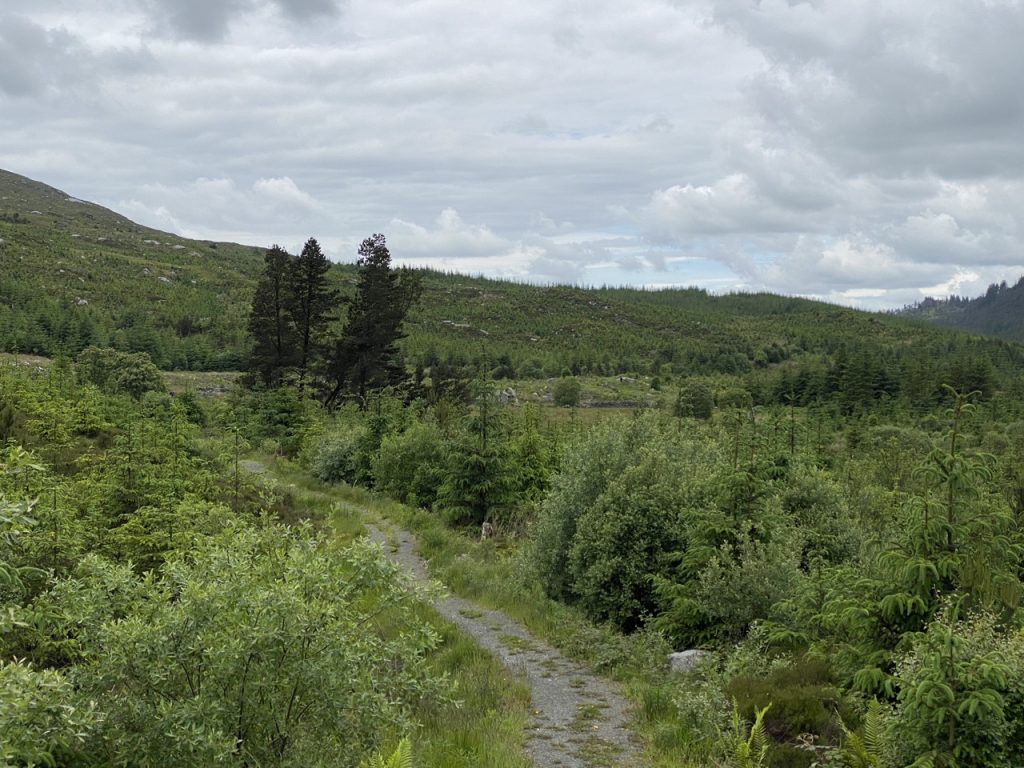
The forestry track off towards Dunkitterick showed little sign of recent use. It ends about 300m short of the ruins but there is a footpath the rest of the way. The path is part of a short circular route.
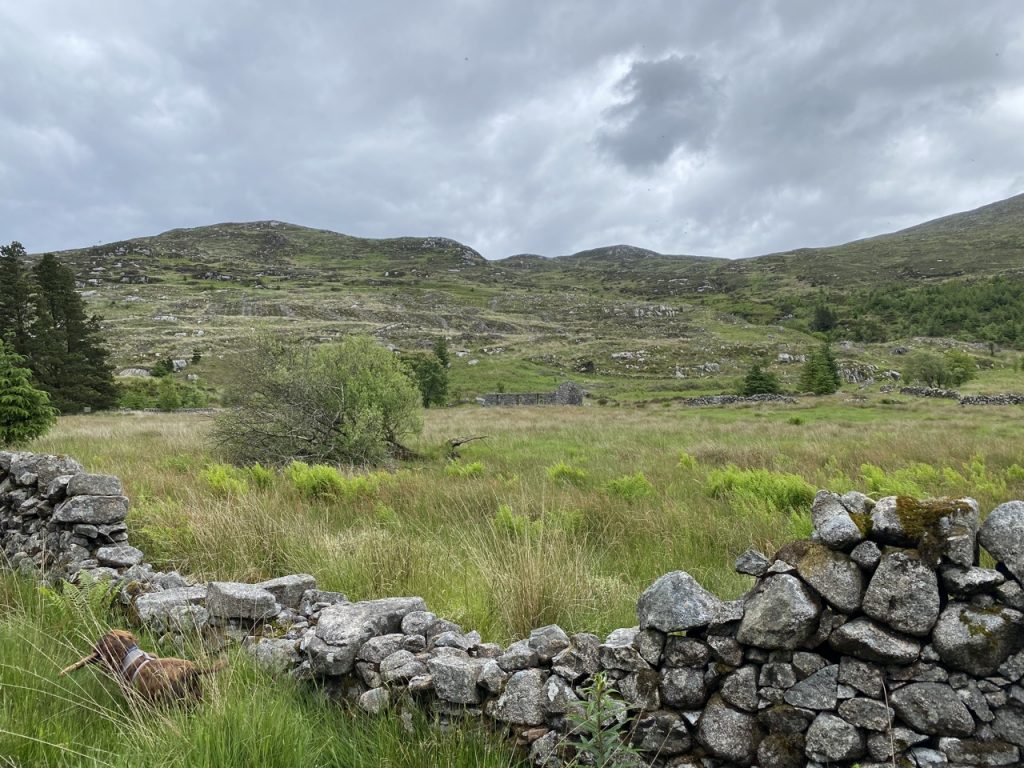
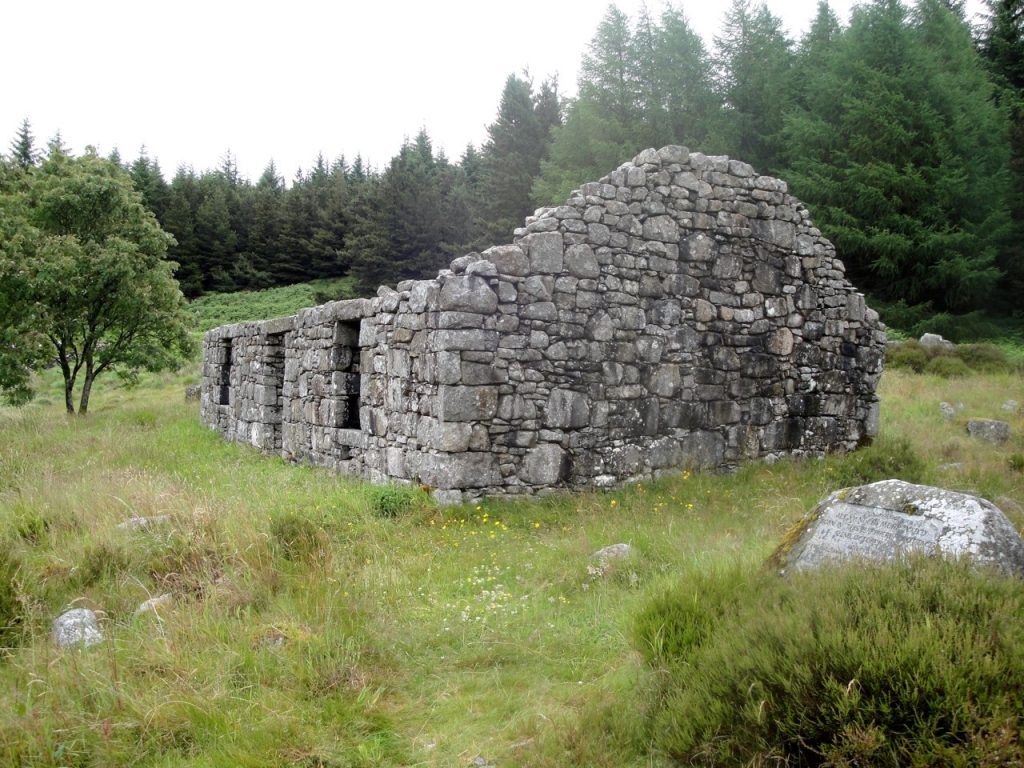
Dunkitterick Cottage though a ruin is a listed historic building as the birthplace of linguist Alexander Murray (1775-1813). A nearby memorial states “In memory of Alexander Murray DD. Born in this shepherd’s cottage 22nd October 1775”
Young Murray was born in too humble circumstances, and reared in too secluded a district, to have the advantage of early instruction at school. When he had attained his sixth year, his father purchased for him a copy of the Shorter Catechism; a work prefaced, in Scottish editions, by the alphabet in its various forms, and a few exercises in monosyllables. The good shepherd, however, thought this little volume (the cost of which is one half penny) too valuable for common use: it was accordingly locked carefully aside, and the father taught his child the letters, by scribbling them on the back of an old wool-card with the end of a burnt heather-stem. When the elements of language had been thus mastered, the catechism was brought forth, and given to the young student as a book of exercises in reading. He then got a psalm book, which he liked much better than the catechism; and at length a New Testament, which he liked better still; and afterwards he discovered an old loose bible, which he carried away piece-meal from the place where it was deposited, and read with all the wonderment natural to a capacious mind, on being first introduced to a kind of knowledge beyond the limited scene in which it had originally been placed.
ElectricScotland
By the age of 12 he was educating children from neighbouring farms, before moving on to educate a mill owner’s children in Minnigaff. Whilst there he met Robert Burns who suggested his enrolment at Edinburgh University. He studied divinity and became the minister for the Parish of Urr. His first language was Galwegian Gaellic but he taught himself English (which he called Anglo-Saxon) and mastered French, Latin, Greek, Hebrew, German, Arabic, Lappish and Ethiopic. In 1811 he translated a letter for George III, brought home by his envoy to Abyssinia. It was from the Tigray Region, where Tigrinya is spoken. Murray was appointed professor of Oriental Languages at Edinburgh University in 1812.
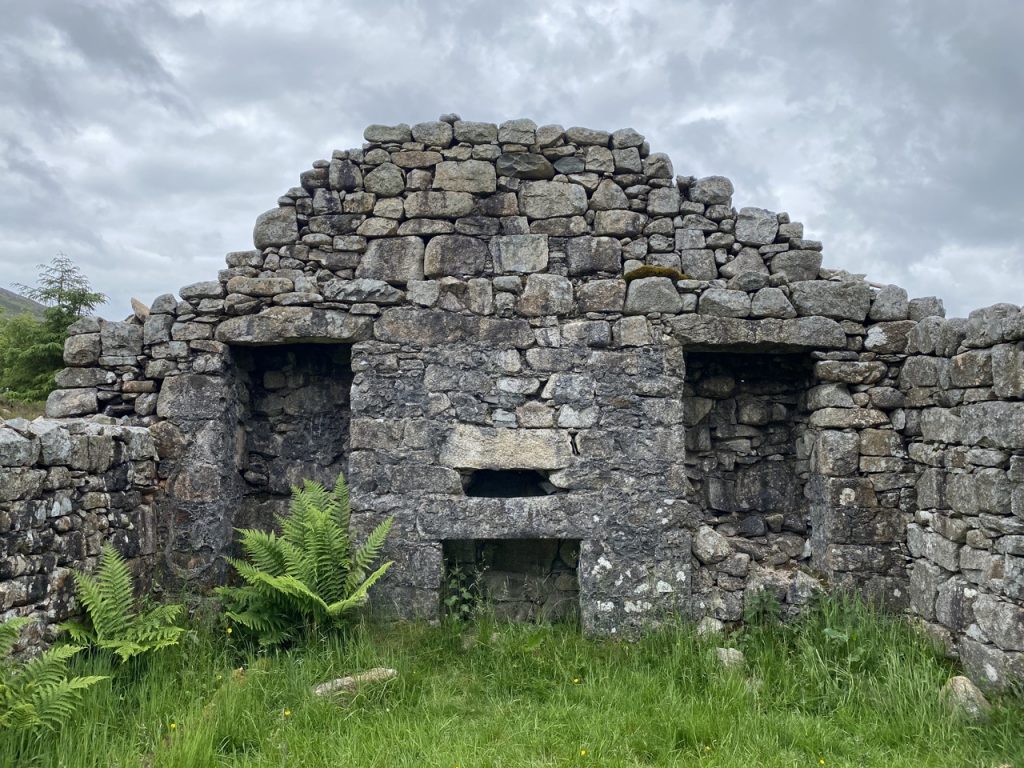
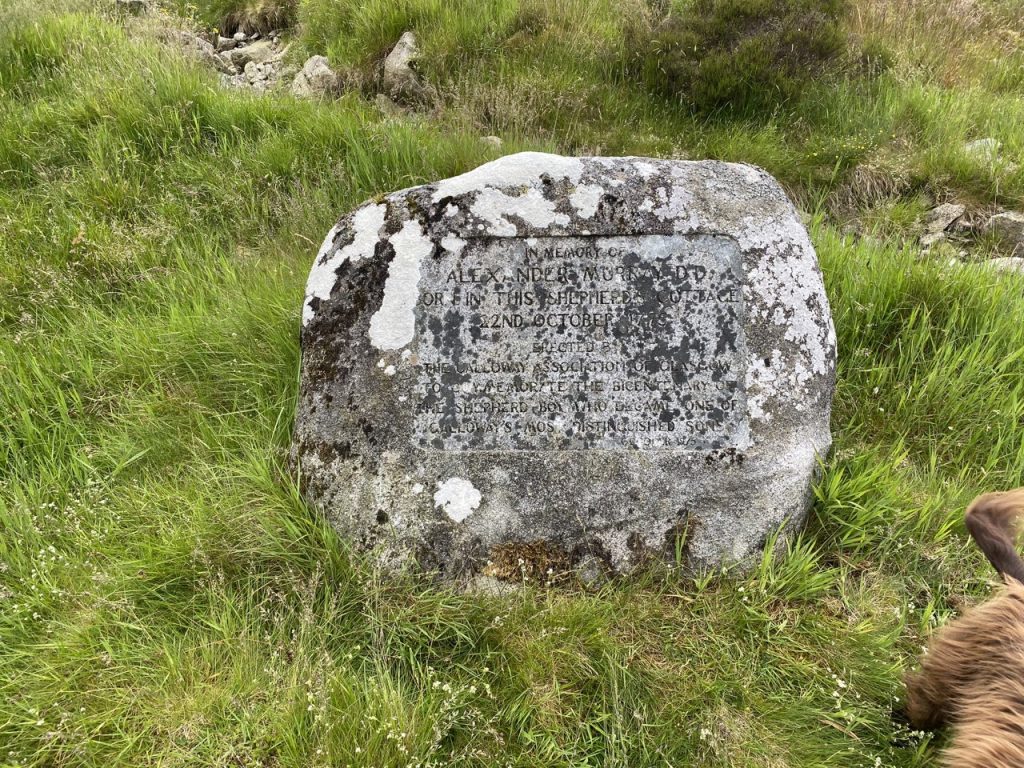
An obelisk in his honour stands a mile away on a hill overlooking the cottage. We didn’t visit it on this walk but I’ll post a picture of me sat at its base a few years ago to give an idea of its size.
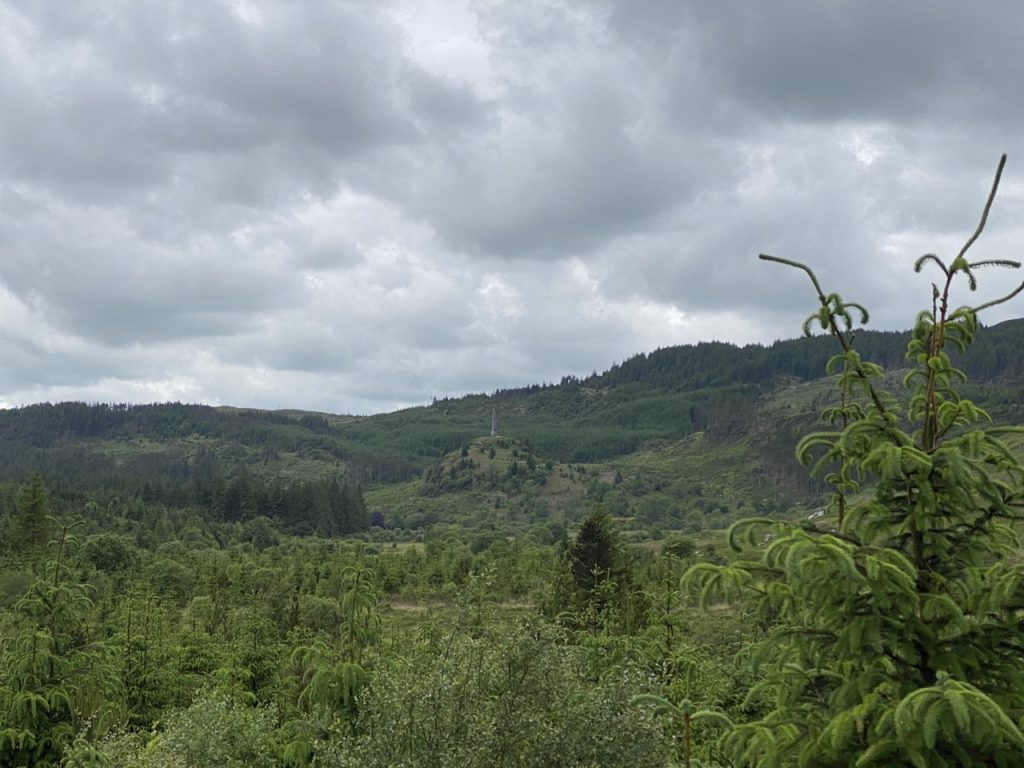

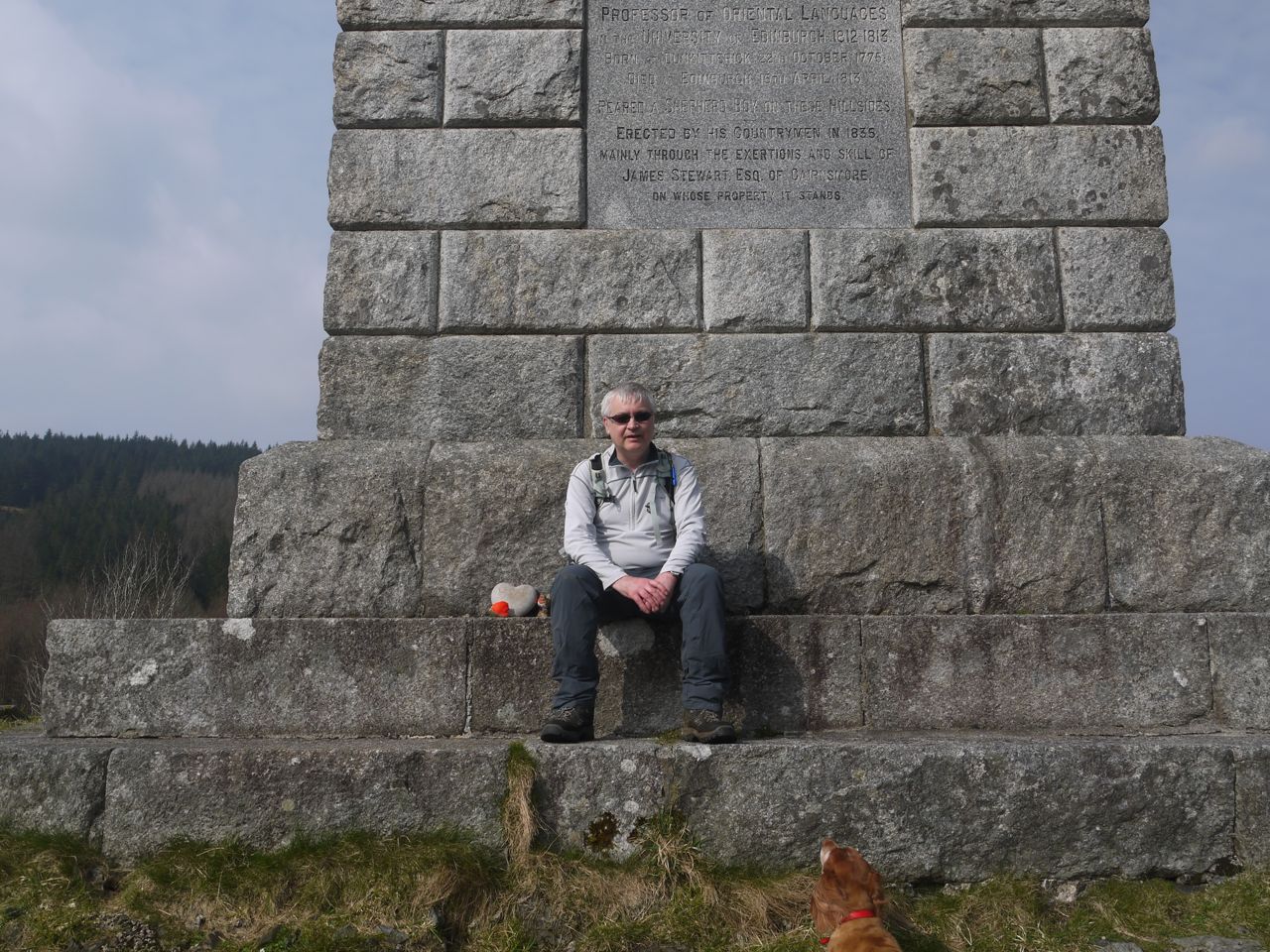
There was only one fly in the ointment for this walk. We found a few rocks suitable for lunch. Once comfortably seated I looked at my left boot. The lace had come loose again but as I looked at it I saw an ant walking across the boot, then another, and another. The ground was full of them. So lunch there was abandonded. I must remmber to put my wee seat in the rucksack.

